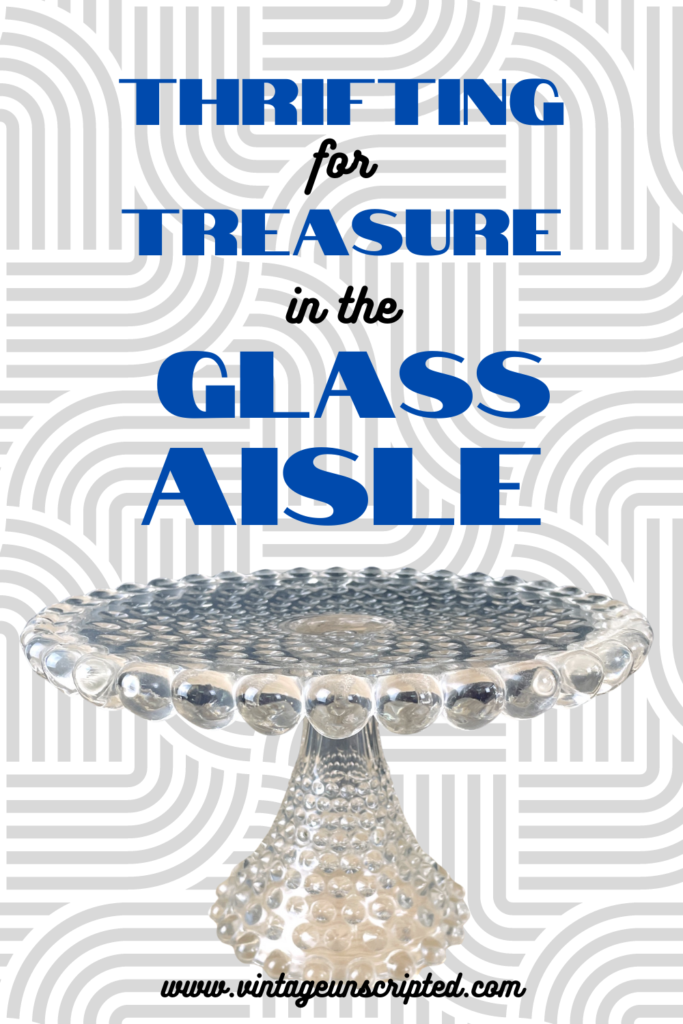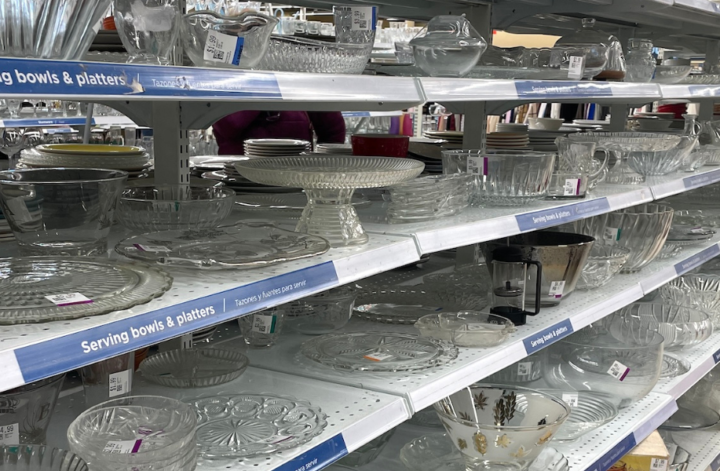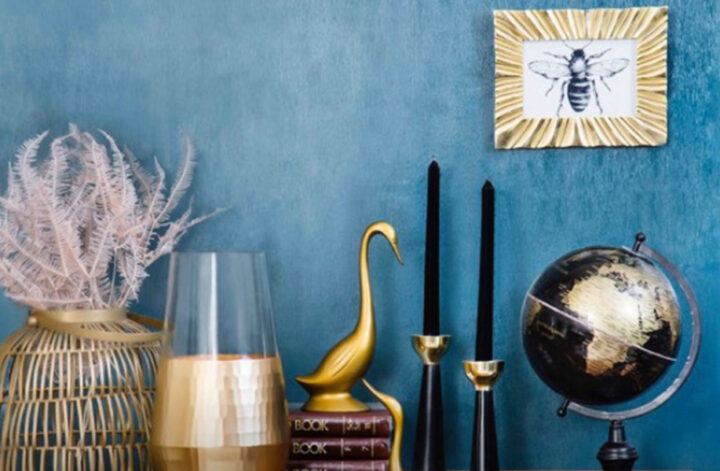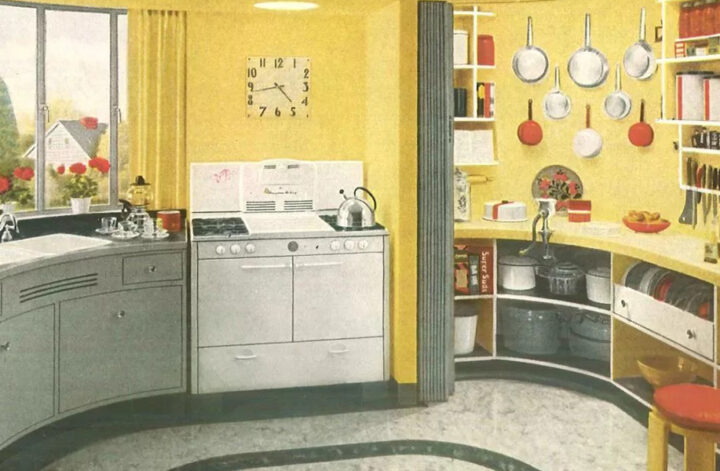Thrift stores are overrun with clear glass pieces, and regrettably, the majority is mundane and forgettable. There are only so many bland florist vases, 1960s pressed glass punch bowls and Christmas platters you can look at before your thrifting brain rebels. It’s easy to skip the whole glass aisle, but every once in a while there’s something there worthy of a Snoopy dance. If you’re a vintage glass specialist, you know what you’re looking for. But if you’re a glass liker but not an aficionado, how can you better your chances for finding treasure in the glass aisle? We have ideas.
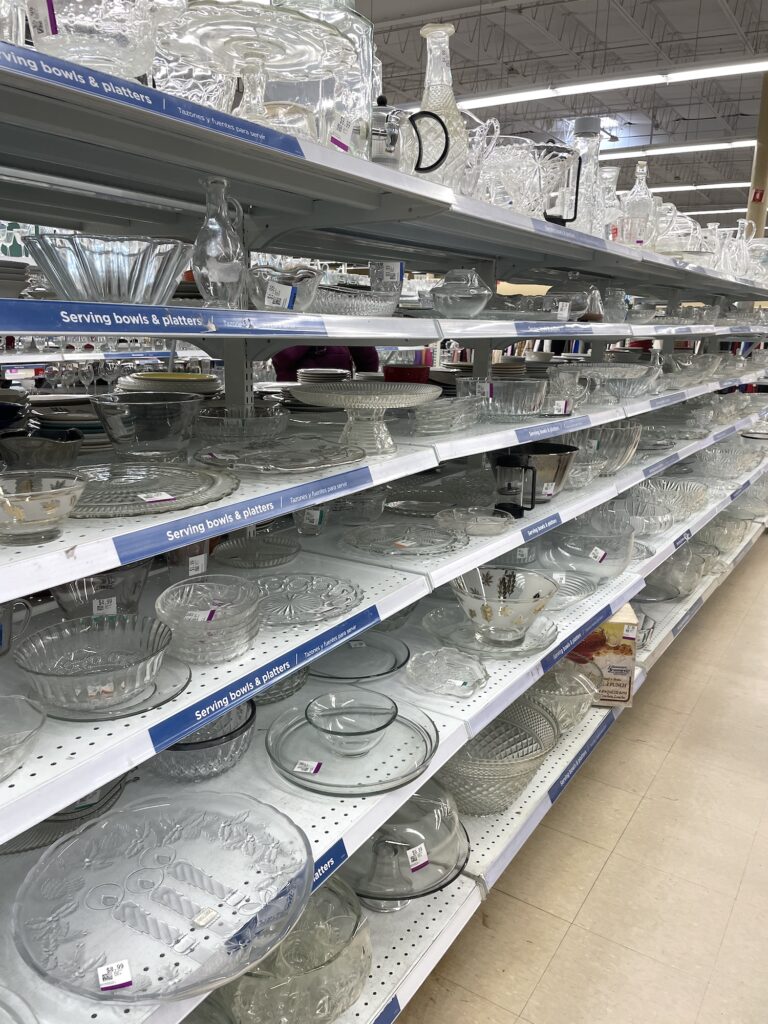
Questions to consider when evaluating a glass piece
Did it catch your eye?
If it stood out amongst all the ordinary glass, it’s worth a further look. (You’re not shopping to finance your retirement, so everything you bring home from a thrift doesn’t have to be of financial value. It’s okay to like something for its design lines.)
Does it look well made?
When you’re thrifting for treasure in the glass aisle, you’re going to see things like the “cut” glass bottles that came in salad dressing kits and vintage cut or pattern glass. If you hold them side by side, you can tell one is better quality than the other. (Hint: it’s not the salad dressing bottle)
Is it glass or crystal?
If you hold it up to the light, give it small twists, and see the sparkle of a rainbow, it’s a piece of lead crystal. If you don’t, it’s glass.
Is it blown or molded?
One is not better than the other. Blown glass will have a pontil mark or the remains of a pontil mark on the base. Molded glass will likely have seams. You might have to look carefully to see them.
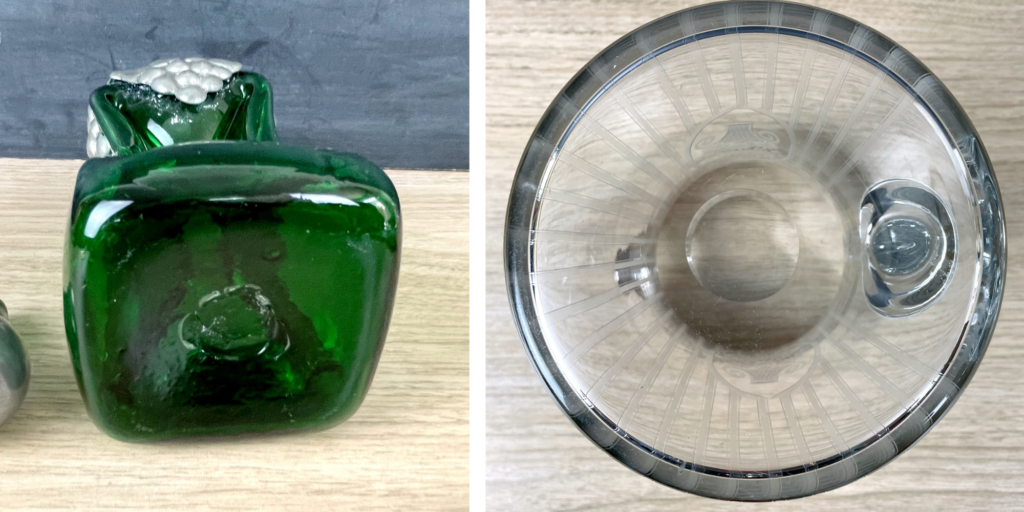
If it’s blown, how is the pontil finished?
Pontils are sometimes finished, how they are finished tells you a lot about the piece. If the pontil has been polished to a nice round circle, that’s better quality. If it’s got a lopsided circle, it’s lesser quality. This is particularly noticeable with paperweights.
Is it signed or marked?
Blown glass often has a signature scribed on the base. And sometimes that signature is absolutely illegible, which is irritating as heck, but it still means that the piece was made by a person or a person for a company. Crystal pieces may also be marked, but not always. Waterford marks by etching their name. It’s surprising a college has not yet offered a degree in finding Waterford marks because they can be devilishly hard to locate.
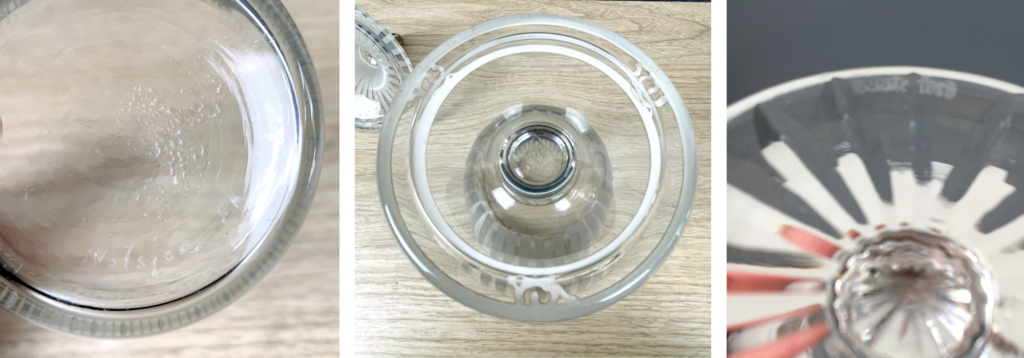
Is it cut or pressed?
Here again, one is not better than the other. There are some gorgeous vintage pieces made each way. If it’s cut, the edges of the design should feel sharp and crisp. If it’s pressed, the edges will feel smooth. Cut glass is much more likely to be lead crystal.
Does it look like something you might see at Anthropologie?
If it has a vintage look, maybe bubbles in the glass, maybe slightly romantic, chances are it’s vintage. You can’t fake that, although we have been fooled by pieces from both Target and Anthropologie more times than a vintage seller likes to admit.
About those bubbles in the glass, are there any?
Antique glass is more likely to have bubbles than modern glass. It’s also more likely to have waves and straw marks. Straw marks are lines you see across a piece that might look like cracks. They’re not, they’re part of the manufacturing process and have been there since the piece was made.
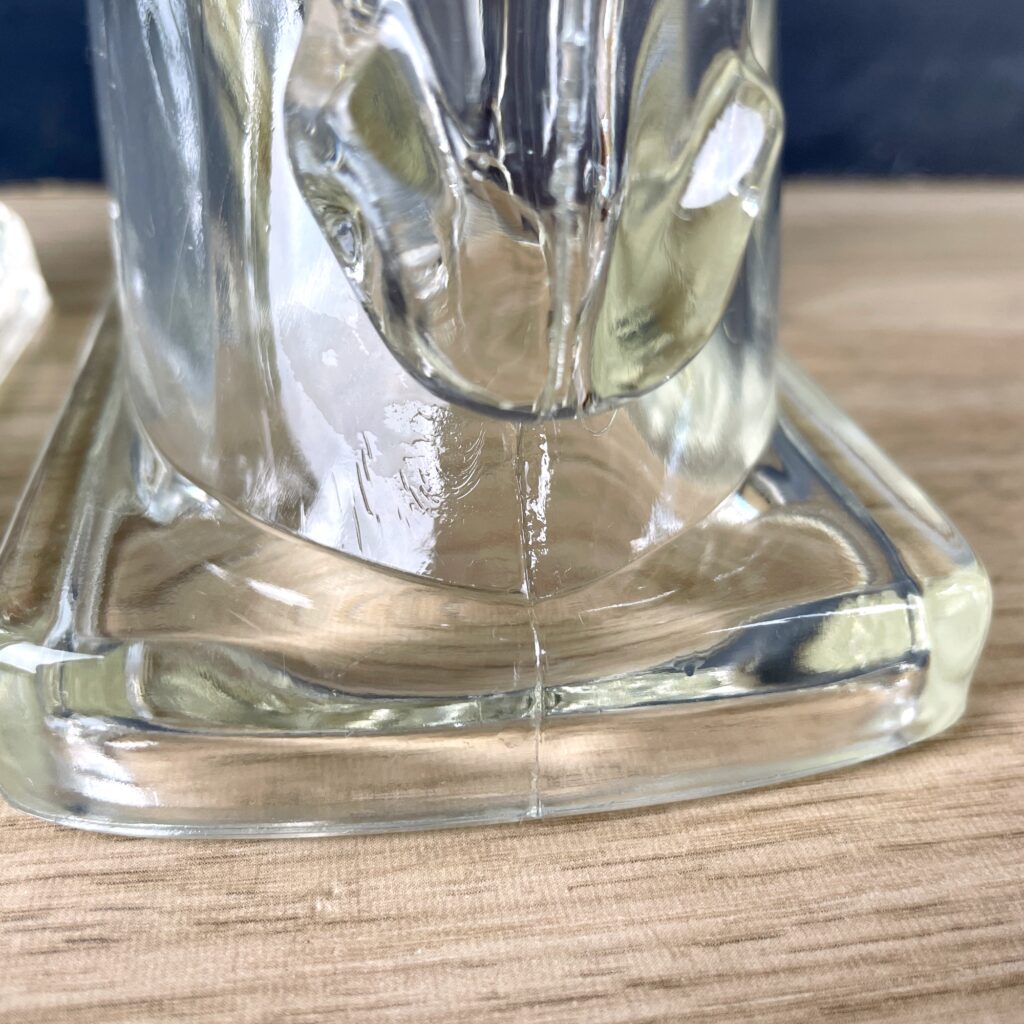
If it’s molded, is the pattern detail crisp?
Lots of depression and Early American pattern glass (EAPG) has been reproduced, and one of the biggest tells that it’s a reproduction is the lack of definition in the molded pattern and super obvious seams. It’s hard to know if you can’t compare it to an actual piece of true vintage or antique glass, so you have to use your spidey sense.
If you’re collecting pieces for yourself and not to sell, it doesn’t matter if it’s vintage or not. What matters is if it appeals to you aesthetically. Also, vintage covers a lot of time. You might find a really nice piece of vintage Crate and Barrel from the 1990s at a thrift that is wonderful or an antique piece from the 1890s. A lot of the previous questions will not apply to pieces from the 1980s and 1990s, but one will: is it well made?
Results of a test voyage through the glass aisle
By way of proving a point, a single trip to a single thrift was made to see if there was anything interesting there.
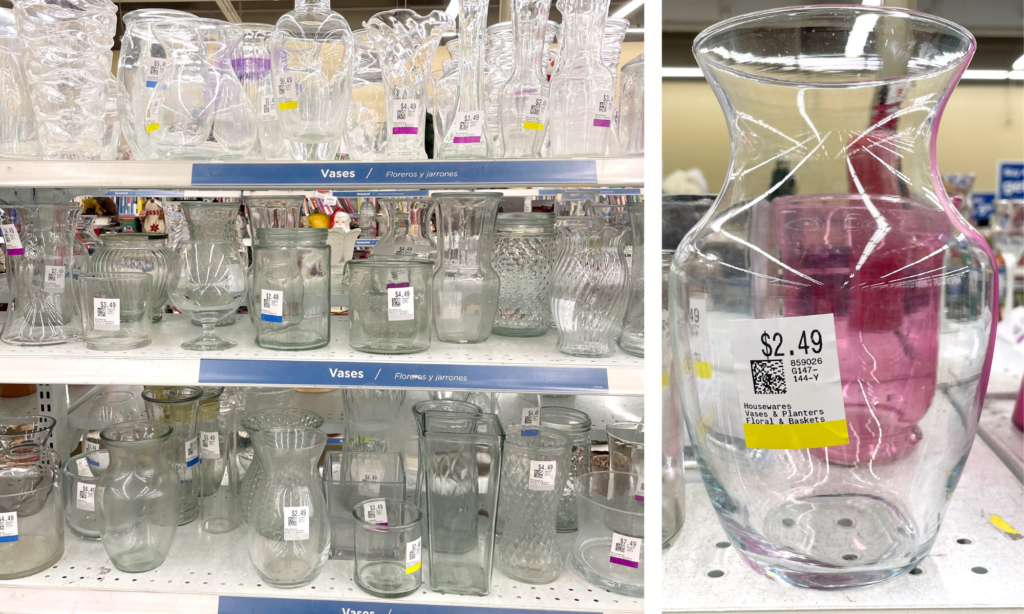
Florist vases were well represented in the vase aisle, including the single most ubiquitous shape (shown right) in a few different models. Many vintage milk glass vases were also originally florist vases, and those continue to charm vintage lovers despite their humble origins. It’s hard to imagine that in 20 years, anyone will be collecting modern clear glass florist vases like this.
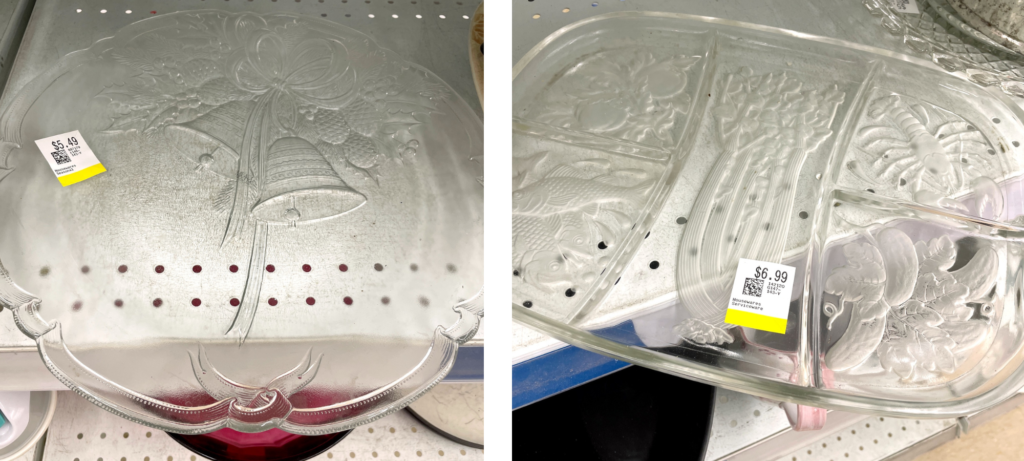
For the love of every bell that jingles, never pay retail for a Christmas platter. The one on the left was one of many in the platters section, all of them very lightly used. The relish tray on the right is a nice piece. After digging an hour long rabbit hole trying to identify the maker–of a platter I didn’t buy–I gave up. There are several round, not rectangular, ones with similar motifs, but opinions ranged widely on what company made it and I could not find anything definitive on any of the go-to research sites. It is a nice piece though.
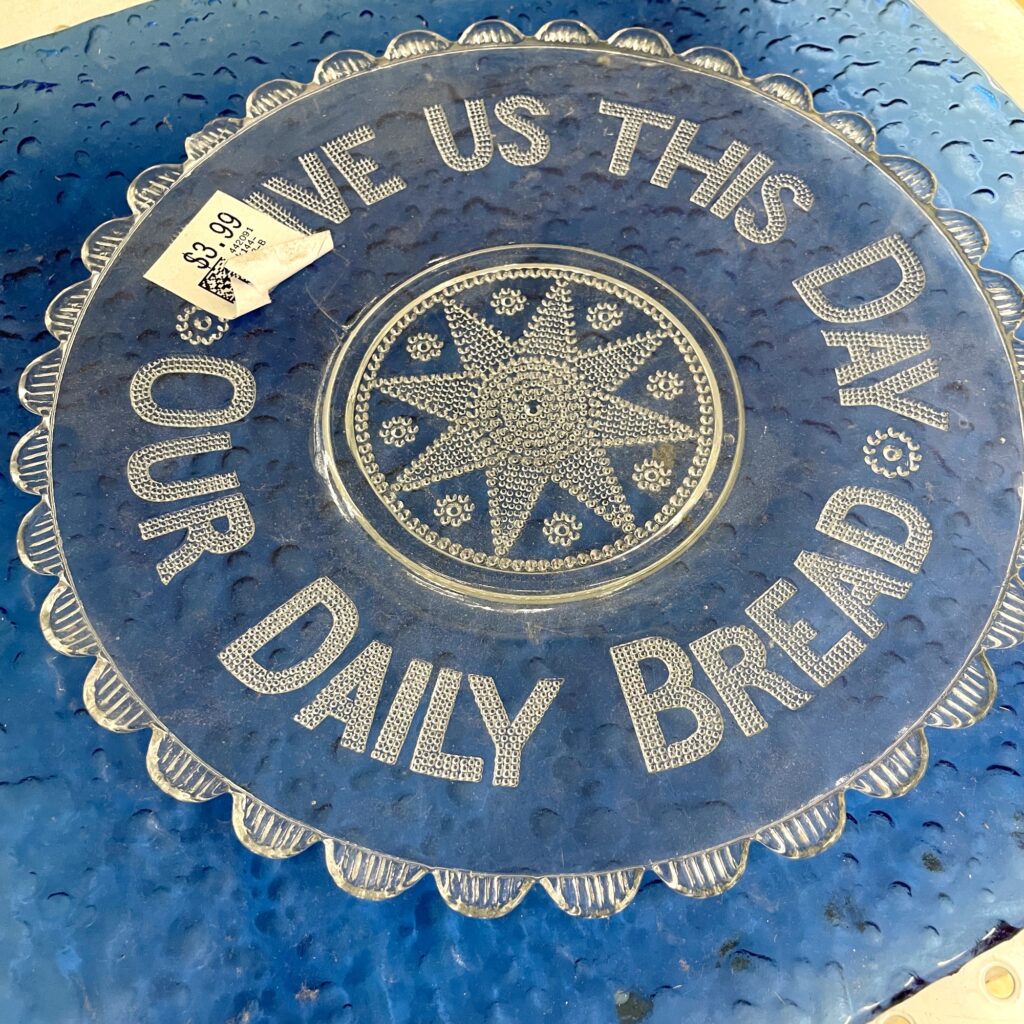
This “Give Us Our Daily Bread” plate is also a nice thing. Bread plates with this motto were common in Victorian homes. Again, I was unable to find an exact match online. The majority of these plates have wheat in the middle, not a star. Without having the plate to study, I can’t say if it’s a reproduction or an antique (and even then I might not be able to), but one thing is for sure, it is nice to look at and was by far the nicest piece in what was an otherwise dull serving pieces aisle.
Was that plate or the relish tray a treasure in the glass aisle? Treasure is in the eye of the beholder. They are well made pieces, didn’t have any noticeable flaws, are decorative and had appealing prices. But there’s one final question: do you have a use for it? If you do, then either one of those could be a treasure. If not, then today was not your day, but as it goes in the thrifting game, today might not be your day, but tomorrow has the potential to be.
How can you learn more about glass?
Glass is such a wide category with so many nuances that the best way to learn about it is to actually like it, because it’s easier to absorb knowledge about things you like. It helps to narrow down your focus to things that you like best, whether that be lead crystal, depression glass, art glass or any category of glass that strikes your fancy. Hit your library for books, join a Facebook glass group, talk to dealers at flea markets…there are so many places you can find information and have fun while you do it. There are also a lot of collector societies online. If you find one particular maker or glass era that speaks to you, it might be worth it to join one of those groups.
Here are a few resources to get you started
Early American Pattern Glass Society, features an incredible online pattern index
National Depression Glass Association, dedicated to depression glass mostly made between 1929-1939
Corning Museum of Glass collections, eye candy for glass lovers
Replacements.com, yes, this is an e-commerce site, but they stock so much it’s an awesome go to
20th Century Glass, another eye candy site mostly covering mid century and European glass
Worthpoint.com, a paid subscription service, a bit excessive unless you’re a dealer or you find yourself falling for glass in a big way. They have a library of digitized collector’s books to browse.
A postscript about glass florist vases: Yes, there are millions of them, and they are not treasures in the glass aisle. You yourself may have a shelf full of them in the basement. Generally speaking, they cannot be recycled in a material way. But check with your local florists; some of them are happy to accept returned vases.
